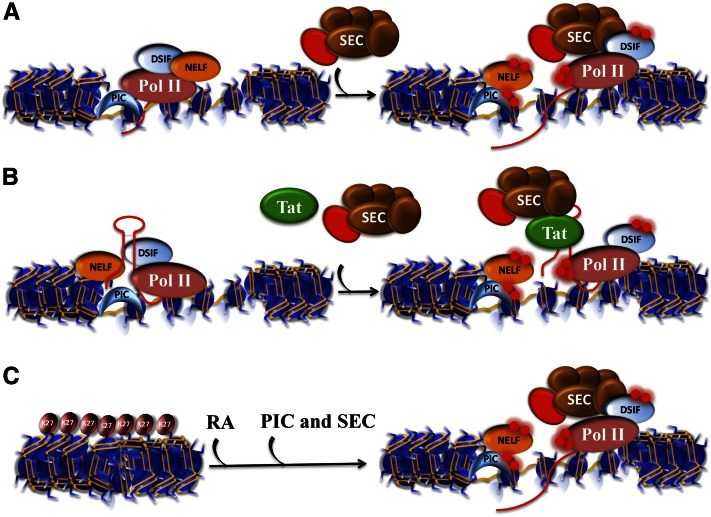Figure 1.
Transcriptional activation with and without paused Pol II. (A) The classic example of transcriptional regulation by paused Pol II was demonstrated for the Hsp70 gene in Drosophila. Pol II is initially recruited to the gene promoter by the PIC (represented here with a TBP-shaped crescent). (Left panel) DSIF cooperates with NELF to keep Pol II within the first 40–70 nt of the transcription start site (TSS). (Right panel) Upon heat shock, the P-TEFb kinase (red sphere), as a component of the SEC, phosphorylates both DSIF and the Pol II CTD to allow the release from NELF, which allows productive elongation by Pol II, while DSIF becomes a positive factor for processivity. (B) Paused Pol II and its release by SEC have been extensively studied during transactivation of the HIV-1 provirus by the HIV-1 encoded Tat protein. Early in the viral life cycle, provirus transcription is inefficient until enough Tat protein has accumulated. Tat binds to a stem–loop structure early in the first 80 nt of the transcript from which it recruits SEC to cause the release of Pol II into productive transcription. (C) Transcriptional induction without paused Pol II. Recent studies in mouse ES cells revealed that one of the most rapidly induced genes in response to differentiation signals, Cyp26a1, lacks paused Pol II in the ES cell state and is covered by H3K27me3. In the presence of retinoic acid (RA), the PIC, Pol II can quickly initiate transcription, and in the presence of SEC, rapid transcriptional induction is ensued (see also Fig. 4A,B).

